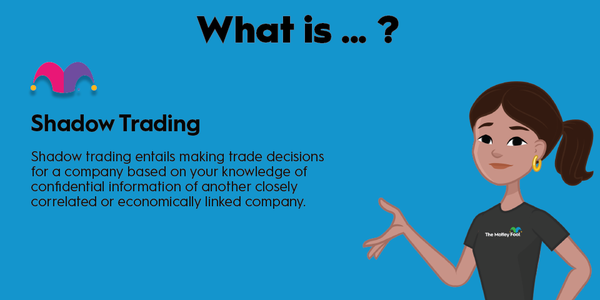Did you ever see the term "semi-supervised machine learning?" Maybe it was the simpler version instead, scrubbing it down to "semi-supervised learning?"
Either way, this geeky talk may have left you wondering what it all means, why it matters to investors and regular people, and whether you've seen this stuff in the real world. What's the big idea?

What is semi-supervised machine learning?
What is semi-supervised machine learning?
This is actually a pretty simple process. You just need a primer on the very basics of machine learning.
In fact, these seemingly complex ideas may take a lifetime to master but only a minute to learn. So let's unwrap this essential concept of artificial intelligence (AI), without the jargon but with all the know-how you need.
Understanding semi-supervised machine learning
Understanding semi-supervised machine learning
Semi-supervised machine learning serves as a bridge between the realms of supervised and unsupervised machine learning. Here's a quick overview:
- Supervised learning: Models are given fully labeled data to study. Then they attempt to predict or classify new data previously unseen by the AI system. The output is fed back into the modeling process, improving the results over time. The computer knows what it wants to achieve and is looking for its own method to reach the desired conclusions. The same method should also be able to draw useful conclusions about new data.
- Unsupervised learning: The computing models are given a data set and, perhaps, minimal instructions and are then left to figure out the patterns in the data independently. The patterns found in this system can be more fully explored with a targeted supervised learning system.
- Semi-supervised learning: This hybrid approach takes advantage of both supervised and unsupervised learning as a single, automated analysis.
Semi-supervised learning uses labeled and unlabeled data for training. The model is given a small amount of labeled data and a large pool of unlabeled data. Then it takes advantage of the patterns and relationships learned from the labeled data to decipher the unlabeled data.
Why semi-supervised machine learning matters
Why semi-supervised machine learning matters
At first glance, this approach may look like overkill. Why not rely on the best unsupervised learning systems available to find data patterns needing deeper analysis and then feed the data sets of interest into a top-notch supervised learning system? After all, it's just one extra step to be performed by human analysts or researchers.
As it turns out, automating the connection between supervised and unsupervised machine learning can unlock massive process improvements and save a lot of time. Obtaining a large amount of properly labeled data can be expensive, labor-intensive, and time-consuming. At the same time, leaving models to draw useful conclusions from heaps of unlabeled data entirely on their own can lead to less-than-satisfactory results.
That's where semi-supervised learning shines. This is a best-of-both-worlds solution -- using the data-sorting efficiency of unsupervised learning and the pinpoint precision of supervised learning.
It takes time to suss out the most interesting unsupervised learning findings. Then a human must decide which data sets are worth the trouble, computing cost, and other assets that go into a deeper analysis (and don't forget that it takes time and effort to actually point the right data in the right direction). Automating these slow, expensive, and tricky steps can greatly speed up the overall analysis and reduce the potential for human error.

However, no process is ever perfect, and semi-automated learning certainly has its fair share of challenges. Like other machine learning methodologies, semi-supervised learning can face issues with data quality, incorrect predictions, or bias based on the labeled data provided. The supervised analysis algorithms will probably churn through a few analysis runs that no human would ever take to the next step, with unpredictable results.
What semi-supervised machine learning can do
What semi-supervised machine learning can do
In practical terms, semi-supervised learning is valuable where you have a lot of data but not all of it is organized or labeled. Fraud detection springs to mind, along with analyzing customer sentiment based on purchase habits or gleaning useful conclusions from medical imaging. These are complex, messy batches of information, but they can deliver important insights with the right kind of analysis.
From an investment perspective, understanding semi-supervised learning could give you an edge. You probably won't set up an AI system of your own to automate your stock-picking research and financial decisions, but you could certainly look for companies taking advantage of powerful AI systems.
This approach might offer them a competitive advantage in data processing and analysis. And it could give you an edge against investors who might not have noticed these potential business advantages.
Related investing topics
How social media giants use semi-supervised learning on a global scale
How social media giants use semi-supervised learning on a global scale
Facebook, a platform that thrives on vast amounts of data, has made strides in integrating semi-supervised learning into its operations. Notably, this technique helps the Meta Platforms (META 0.43%) subsidiary understand, tag, monetize, manage, and otherwise use the text and image data supplied by social media posts.
For instance, Facebook's AI Research team (FAIR) has used semi-supervised learning to optimize machine translation systems -- a key component of their global community engagement and international growth ambition. By combining a small amount of labeled and deeply understood data with an enormous pool of chaotic, unlabeled data, Facebook has improved the efficiency and accuracy of these translation systems, helping break down language barriers across its user base.
Perhaps one of the most crucial applications of semi-supervised learning at Facebook is its use in moderating online discourse. It applies it to detecting and removing hate speech -- a difficult task, given the complex nuances of language and cultural context.
With the large volume of posts flowing through social media services like Facebook and Instagram at all hours, it makes sense to automate the reviewing process as much as possible. Relying on semi-supervised learning techniques results in better moderation practices by learning from and adapting more efficiently to a large data pool.
While Meta's examples underline the potential of semi-supervised learning, they also highlight its challenges. Unknown or poor data quality, incorrect predictions, and bias are all potential pitfalls that Facebook, like any other company employing semi-supervised learning, must navigate carefully.




































































































